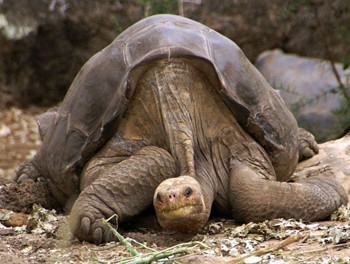
It's likely giant ground sloths used their claws in a similiar way to hook branches and pull them within reach. Like tree sloths, they were vegetarians and probably not fussy about what they ate, chewing their way through leaves, fruits, twigs and all. The big difference between the two is their size. Giant ground sloths were 500 times bigger than their modern relatives. And standing up right on their back legs, they towered as tall as a giraffe.
可能巨型地懒也像树懒一样用他们的瓜子来抓住树枝,并在能够触及的范围内探索食物,他们都是素食主义者,可能他们对于食物都不挑剔。一路上他们吃着树叶、水果、小树枝等一切能吃的东西。而这两种动物最大的不同则是他们的体型。巨型地懒的体型比他们的现代亲戚大500倍,要是他们用后退站立起来的话,他们有长颈鹿那么高。
So far we have pieced together something of the people who first explored the southeast of the continent and the wildlife they must have encountered and hunted. But what about the climate and the landscape they all lived in?
到目前为止,我们已经把过去的一些痕迹搜集到了一起,他们包括第一批来探索这片大陆东南部的人类以及那些他们一定遇到过或是捕杀过的动物。但是他们居住地方的气候和景色有事什么样呢?
Florida is tropical today, but how warm was it 13,000 years ago? This is Little Salt Spring in central Florida, the source of one of the most unlikely clues to the climate of the past. Brought up from a ledge more than 20 metres below the surface was the fossilized shell of a tortoise, a giant tortoise, much like this one. Giant tortoises are now only found basking in the heat of a few islands along the equator.
佛罗里达现在属于热带地区,但是在13000年前,那里的温度如何?这是坐落于佛罗里达中部的小盐温泉,在这里存在着一个有关佛罗里达过去气候的线索,但是这条线索似乎不太可能。在地下20多米深的暗礁里,有一个乌龟壳的化石,这是一种大型龟——很像巨型陆龟。现在,只有在赤道附近的一些岛屿上,我们可以看到巨型陆龟享受着日光。
英文文本来自普特英语,译文属可可原创,仅供学习交流使用,未经许可不得转载.












